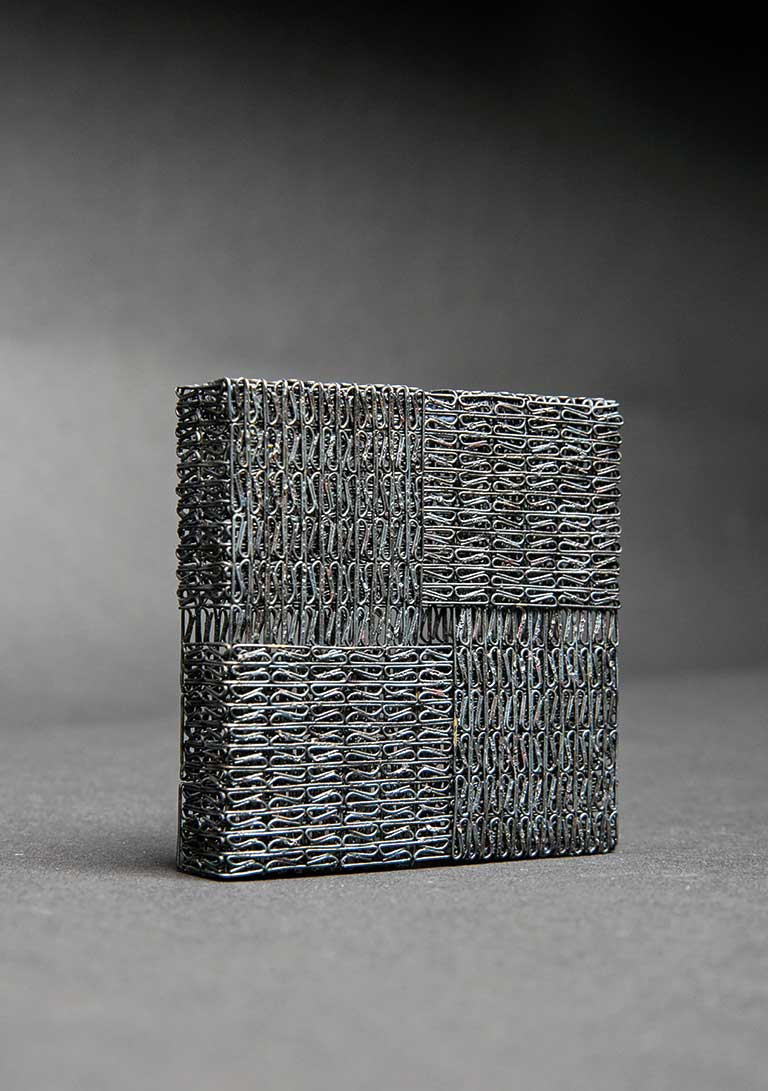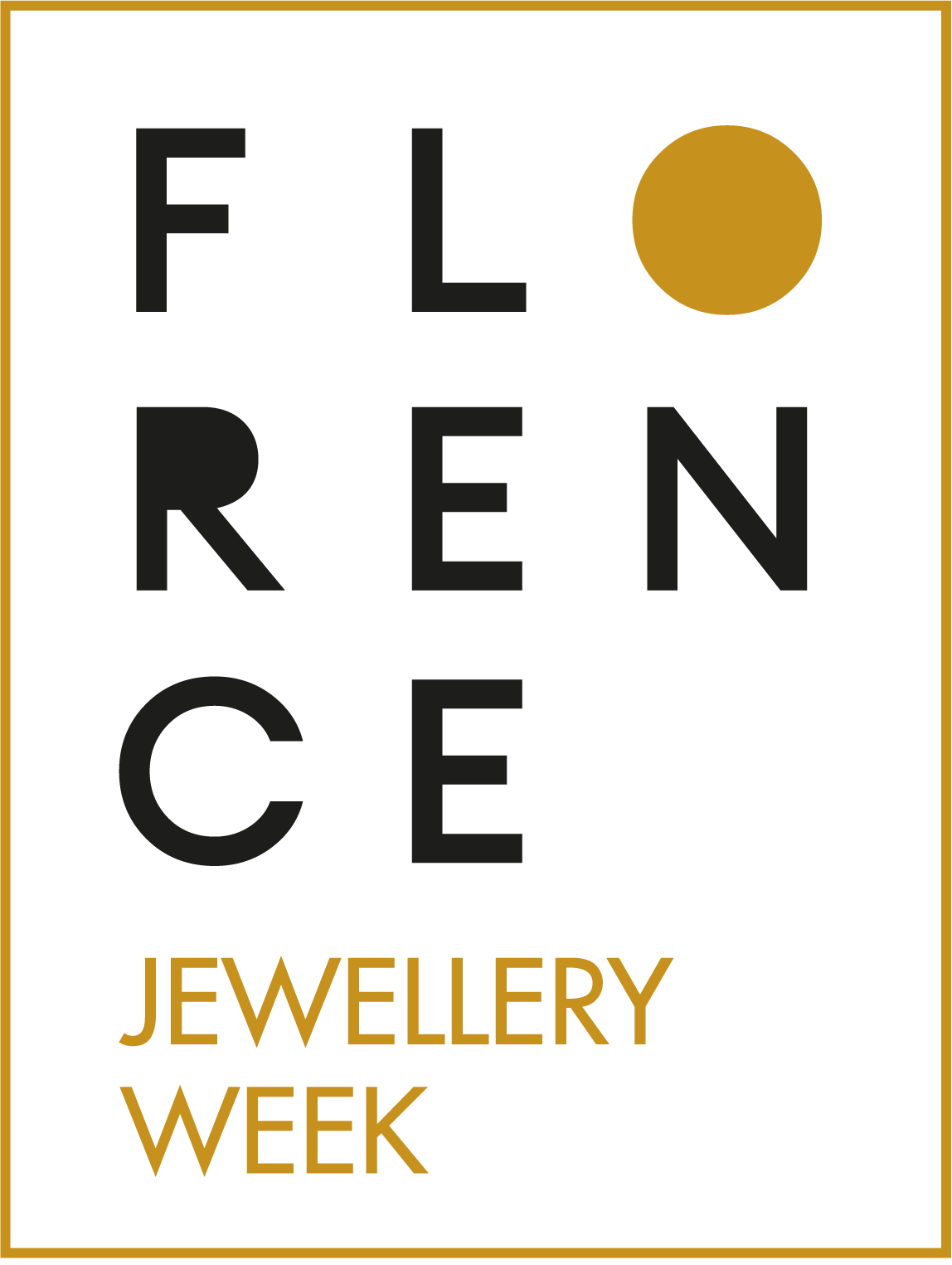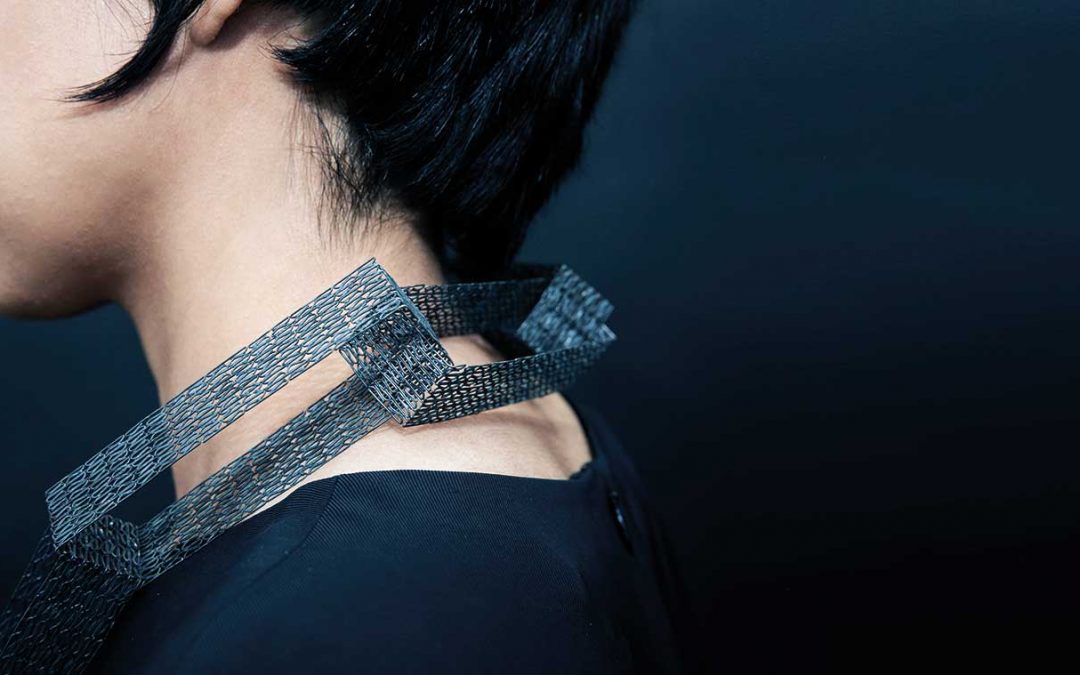Jess Tolbert, “Greater Than Series”
Necklace 2019, steel staples, mm 660x30x30. Credits: Jeanette Nevarez
I interviewed Jess Tolbert, one of the seven winners of Preziosa Young 2020, the international contest organised by Le Arti Orafe since 2008, which gives to emerging talents more than one occasion to show their work and to take part in the contemporary scene of research jewellery.
This year the jury was composed by jewellery experts, like goldsmith artists or teachers, namely Giovanni Corvaja, Eugenia Gadaleta, Kazumi Nagano, Cóilín O’Dubhghaill, Renzo Pasquale, Carla Riccoboni, Sam Tho Duong.
A selection of the winners’ pieces was displayed in the PREZIOSA space at Inhorgenta fair 2020 (Munich, 14.02 – 17.02), while the complete exhibition and a high quality catalog will be presented during Florence Jewellery Week 2020 (Florence, 28.05 – 4.06).
Stay updated because the prizes still at stack are many: LAO SPECIAL PRIZE will give one of the selected candidates the opportunity to spend three months as “artist in residence” in Florence. Furthermore, thanks to a collaboration agreement between LAO and the Inhorgenta fair, one of the selected artists will get a free exhibition space for its 2021 edition (INHORGENTA PRIZE).

Jess Tolbert, Greater Than Series,
Necklace 2019, steel staples, mm 560x30x15. Credits. Jeanette Nevarez

Jess Tolbert, Greater Than Series
Brooch 2019, steel staples, steel, 14K gold, mm 100x100x20. Credits: Jeanette Nevarez
When dealing with contemporary goldsmith artists or jewellery designers, the first curiosity is to know how one has chosen ornament as the main means of expression. Why jewellery in particular and what was your training in this field?
JESS TOLBERT: I began my training in this field in 2006, at Texas State University in San Marcos, Texas. I studied under the amazing metalsmiths Beverly Penn and Nicole Deschamps-Benke, as well as Billie Jean Thiede at the University of Illinois, Urbana-Champaign. I didn’t know about the field, or that I could study it at the University level until a friend of mine showed me a necklace she had made. Wow! I was enamoured. So, I took a class and never looked back. I also have a background in dance and I think my connection to thinking about the body really lent itself to my studying jewellery and metalsmithing. I am fascinated by the things we use, how we use them, and why.

Jess Tolbert,Greater Than Series
Brooch 2019, steel staples, steel, 14K gold, mm 63x40x47. Credits: Jeanette Nevarez

Jess Tolbert,Greater Than Series
Brooch 2019, steel staples, steel, 14K gold, mm 115x90x35. Credits: Jeanette Nevarez
In your jewellery you choose a specific but very commonplace object of everyday life, the staple, transforming it into your trademark. The staple is a mass industrial product to which you give unique and individual character, creating jewels that are unique pieces. Would you tell us about that purpose?
JESS TOLBERT: My current practice explores the use of industrially made products to create jewellery that has the duality of being both manufactured and handcrafted. Certain objects hold utilitarian functions in our everyday lives and serve as a means to an end; however, once they are reimagined as raw material and manipulated by a skilled hand, a transformation takes place. This shift fuses the functional and decorative, as well as memory with imagination. Reconsidering the commonplace objects of everyday life and mass production as jewellery creates an intimate link to our relationship with labor and the built environment.
A humble staple is often overlooked, simply used to bind pages together, or to post a flyer to a lamppost; its purpose does not often extend beyond what it was intended for. I am drawn to its recognizable form and to the rhythm of its use. Through repetitive actions of layering, patterning, and systemically constructing, I replicate the pace of mass production, but not its protocols. With infinite possibilities, I reflect upon the unknown makers and their process to create a product that is now my raw material. Capturing labor in the form of jewellery speaks to the associated value typically assigned to such formats. Jewellery is an inherently social form of art, representing wealth, status, and membership, yet also individuality and identity. It is the identity of the maker and wearer that I aim to highlight.
It’s impressive how you manage to give rhythm and shape to very complex jewels that are composed only by the repetition of the same basic module of the staple. What technique do you use?
JESS TOLBERT: In terms of process and materials, I do focus on mass-produced products as my raw material. The staple becomes my singular component, one part of a whole. I micro-weld, or fuse, them together one element at a time. I use the inherent form of the staple to create different patterns, ultimately creating my own ‘sheet’ of material with which I can treat as I would other sheets of metal. I fabricate and hollow construct with this ‘raw material’, creating unique constructions with infinite possibilities. The staples are made of steel and the surface is the result of the fusing process; brooches include the edition of hand-fabricated pin mechanisms in steel and 14K gold.
Is there an artist or an artistic tendency that inspires or influences you particularly?
JESS TOLBERT: There are so many! But I’d have to say that, of course, I’m inspired by artists who cleverly transform mundane materials, especially in mass and to the point of the material being somewhat unrecognizable upon first glance. I love the mystery and discovery in that. El Anatsui for instance. Also, artists who are interested in ideas about labor and our connection, or disconnection, to that – Ann Hamilton’s Indigo Blue project is great example. And finally, metalsmith and jeweller Tone Vigeland – a master of the multiple!

Jess Tolbert, Greater Than Series
Necklace 2019, steel staples, mm 560x30x15. Credits. Jeanette Nevarez

